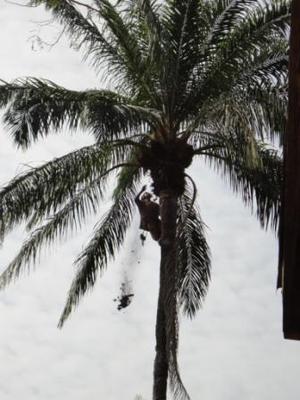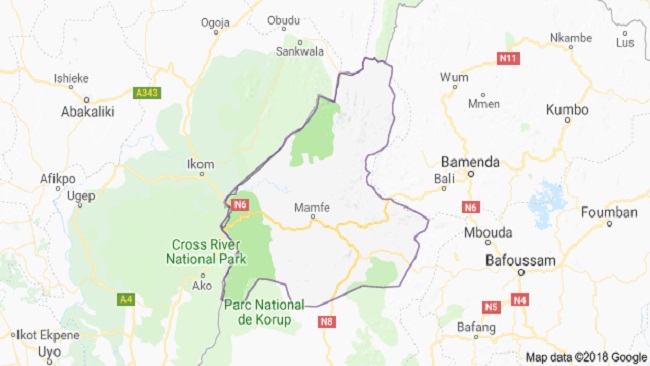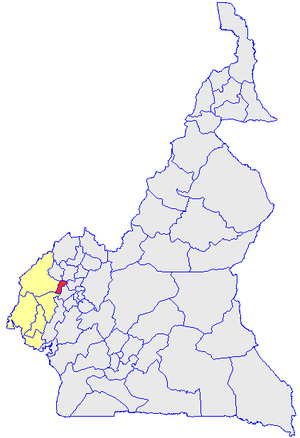All About Fako
|
Fako Division is an administrative sub region found
in the South West Region of Cameroon. This division occupies an area of 2,093
km² with an overall population of 466,412 as of
2005. |
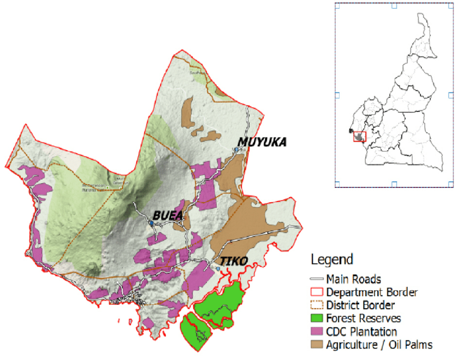
Limbe is the capital of Fako division. The division also has as it sub divisions Buea, Limbe I, Limbe II, Limbe III, Tiko, Muyuka and the West Coast. Fako is also referred in other languages as Fano or Victoria Division.
Quick and Fun Facts About Fako
Fako, Home of the Baquerians
|
|
Attractions
Fako Division is endowed with a lot of touristic sites, which act as a source of attraction to tourists from all over the world and in the country. These sites include; Mount Fako being the highest mountain in West Africa with an elevation of 4,040m. It is an active volcano found near the Gulf of Guinea. It lastly erupted in the year 2000.
The Limbe Botanical Garden is the second oldest in Africa and serve as a habitats to ancient cycads, nutmeg and an unnamed tree described by locals as ‘Africa Viagra’, the Debundscha lake, the Tiko Golf, Our Lady of Grace Shrine Sasse and the beaches in Limbe.
The Division is a hot spot for biodiversity especially with the presence of Mount Fako. It has major terrestrial ecosystems like savannah, mountain forest, arid, semi-arid, and fresh water ecosystems and also blackish and marine ecosystems with their associated biodiversity.
There are so many beautiful hotels which are up to standard and includes the Victoria guest house hotel in the town of Limbe, First International Inn Newtown in Limbe, Fini Hotel Bobende in Limbe, Chariot hotel in Buea, Mokonya’s Guest House in Buea, Parliamentarian Flat Buea and so many others.
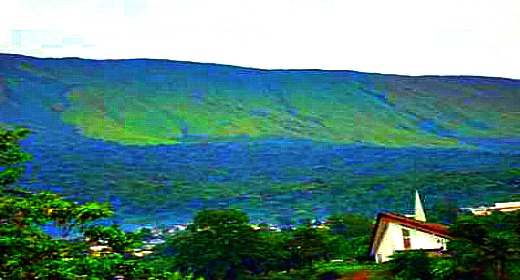 |
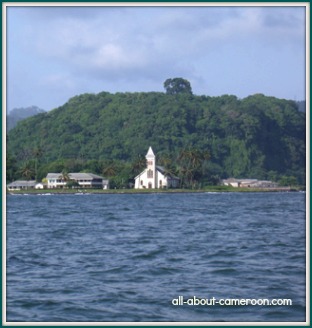 |
Education:
Education is ranked very high, when compared to other divisions in the country. Hundreds of schools are found here and include Universities, colleges, teachers' training centers etc. School attendance is very high.
Fako: Administrative Setup
Fako is divided into four sub divisions which include:
Buea Municipality
Buea municipality is found in the Fako Division of the south west region of Cameroon. It is located between latitude 4012 to 4031 north of the Equator and longitude 9⁰09 to 9⁰ 12 east of the green which meridian. It is bounded to the north by the tropical rainforest on the slopes of Mount Fako, to the south by the Limbe sub division, to the south –east by Tiko sub division. To the east by Muyuka Sub Division and to the west by Idenau Sub Division, (CVUC Buea 2018).
The Buea munipality with regards to climate, has an average sunrise of 06:16am and sunset of 06:16pm. The town has an average equatorial climate with two major seasons being the rainy season and the dry season. The rainy season runs from March to October and the dry season from November to Mid-march. The area has an average rainfall of 4000mm with an average temperature of 240C. (www.climate data.org and www. Meteoblue.com/en/weather/forecasting 2019)
The soil and geology of Buea municipality consist of fairly high and low lands which are made of basalts as a result of volcanic activities of Mount Fako. The rocks have been weathered over time producing volcanic soils which are dark in color, well drained because of the sloping nature of the terrain/relief. The soils are very fertile and rich in nutrients and favours the growth of crops like tomatoes, pepper, maize, yams, and cassava. The sedimentary which alongside the climate are very supportive for plant growth, (Buea-CVUC 2018).
In terms of vegetation, Buea is located in the tropical rainforest region with the vegetation generally green almost all year round, and has very few trees in the area, it is rare to move a distance of 200 meters without finding green grass, shrubs and trees. Also, the area has a distinct bio-physical environment surrounded by an ever green ecosystem with a high variety of biodiversity including not only plants but also birds and other animal species, (Neba, 1999).
The drainage and relief of Buea consist of gentle sloping terrain as we ascend from mile 14 towards mile 16, it rolls and undulate as we further ascend the slopes of the mountain around Great soppo and the topography becomes steeper right up to Buea town. The low lying nature of the area is favorable for human settlement and activities of man as it lies less than 230m in altitude around mile 14-molyko and less than 260m from Great soppo to Buea town, (Neba, 1999).
The population of Buea consists of a mix of people from different regions of Cameroon and from different ethnic backgrounds or tribes. The natives of this area are the Bakweri people.
The economic activities in Buea is of great importance to the whole country as activities practiced here includes education, commerce and agriculture. Agriculture can be presumed to comprise almost 30% of the population engaged in the activity. The agricultural population is made up of the young, old and age. The output from this activity is not only consumed within Buea but also exported to other countries.
With regard to commerce and trade, primary products like food items harvested such as cocoyams, tomatoes are sold in the markets and shops as well as building materials, household’s provisions among others found almost everywhere in the town.
Education in the Buea munipality area has over the years been on an increase as a host of nursery, primary, secondary schools and universities are found almost everywhere here in the town.
Muyuka Sub Division
Muyuka is a sub divisional town of the Fako Division in the south west region of Cameroon. Originally, Muyuka is the home to the Balong tribe, but due to migration, a mix of tribes like the bangwas, bayangi, are found and it is now headquarters for sub villages and towns like owe, Ekata, Yoke, Muyenge, Bafia, Malende and Mpundo. Historically, slave trade was intense in this area and they suffered from the colonial masters.
Muyuka is a host to popular educational institutions like Government Bilingual High School, Vocational College of Arts, Science and Technology, Technical and Commercial College, Efuetngu Memorial Comprehensive College and Government Technical High School.
Religiously, the dominant places of worship in Muyuka are the Roman Catholic Church, Presbyterian Church, Full Gospel, Apostolic Church, Baptist and the Muslim mosque.
Muyuka has fertile volcanic soils due to the presence of mount Fako. The volcanic soil is very conducive for agricultural practices.
The Bakwerians originally called Tiko ‘Kake’, which is a town and port in the South West Region. It is bordered to the North West by Buea council, to the south by Bonaberi Douala urban council, Limbe city council to the west, north east by Muyuka council and to the east by Dibomberi, with a locational coordinates of 4⁰4ᶦ30ᶦN 9⁰21ᶦ36ᶦE, with an elevation of 64m and a total population of 78,885 as of 2012.
Historically, Tiko began as a market for the Douala fishermen, hunters from Bulu, Bokova, Bwenga and Molyko.
In terms of tourism, Tiko is a destination for tourist. It’s an industrial town occupied mostly by Cameroon Development co-operation base on palm oil, banana and rubber production.
Educationally, Tiko is a host to many colleges such as GBHS, Plive college, Sure Foundation Comprehensive college, Imperial Academy of Art and Science and Christ the King college.
The Likomba Golf course is present in Likomba with 18 holes which makes Tiko a hosts of the Tiko Golf club especially to Golf lovers, held during the dry season as it is one of only 2 golf courses in the country.
Tiko has two major hotels. Airport hotel, built in the 70s and which derived it name from Tiko airport is located in Long Street, and 3813 hotel built by 2002, found along Tiko-Douala road and has a swimming pool, supermarket, internet access and a night club.
Tiko market is the most renounced in West Africa as people travel from neighbouring villages, towns and countries to shop or for business purposes.
The main quarters in Tiko are street 1-7, down beach, Golf club, Long Street, Likomba, Motombolombo, Ombe, New layout, new quarter, Mutengene and P&T quarters.
Founded in 1858 by the British missionary Alfred Saker on the slopes of mount Fako, known as Victoria from 1858 to 1982, is a seaside city in the south west region of Cameroon. According to 2005 census, it population is estimated at 84,223.
The official language spoken in Limbe is English, Pidgin English and the native language which is Bimbia or isubu. French is also spoken due to the proximity of the town to Douala which is French speaking.
The port of Limbe is one of four commercial port in Cameroon and is the center of the oil industry in Cameroon with other important industries such as tourism and fishery.
Limbe became a site of cement works in 2008 and host to the head of office of one of Cameroon’s largest companies (CDC). The only oil refinery in the country is in Limbe (SONARA) and Bundes construction which is the largest civil engineering company. It has a natural sea port which is non-operational.
Limbe has many small motels and inns which include the Musango beach hotel, Guest house, LK Hotel, Atlantic Beach, Trinity, Park and Mirama, Savoy Palms and First International Inn which accommodate both tourist and business guest.
The city council of Limbe since 2014 usually organizes annual festivals of Arts and culture known as Limbe FESTAC. Activities include a caravan to kick start the event, fashion parade, canoe race, traditional dances, exhibition, and display of traditional dishes and electon of Miss FESTAC.
Limbe being a viable tourist destination, has so many tourist attractions such as the Limbe Botanic garden, wildlife center and an extensive almost unique dark sand private and public beaches.
The town is a host to a number of football clubs such as the Best Star Academy, Njala Quan Sport Academy founded by Henry Njala quan, and Victoria United just to name a few. The construction of the Limbe stadium is planned and financed by the state-own Chinese company.
Hope you enjoyed our page on Fako. Click here to return to the home page
Further Readings
https://en.wikipedia.org/wiki/Fako_(department)
Have A Great Story About This Topic?
Do you have a great story about Fako? Share it!
